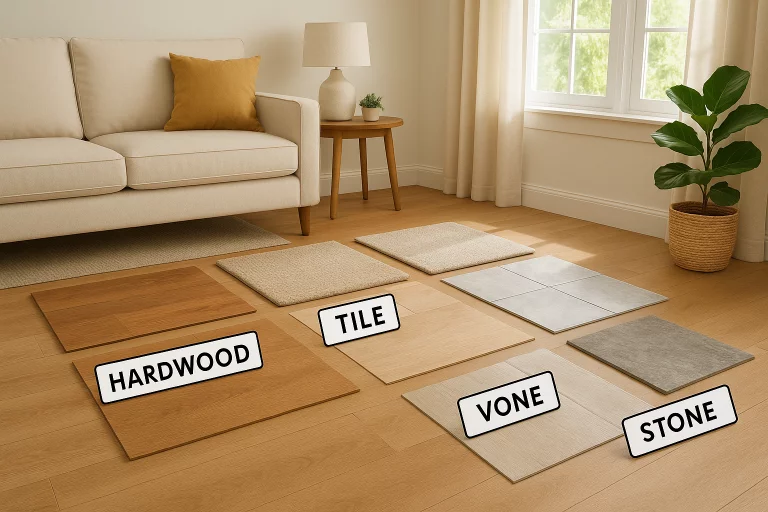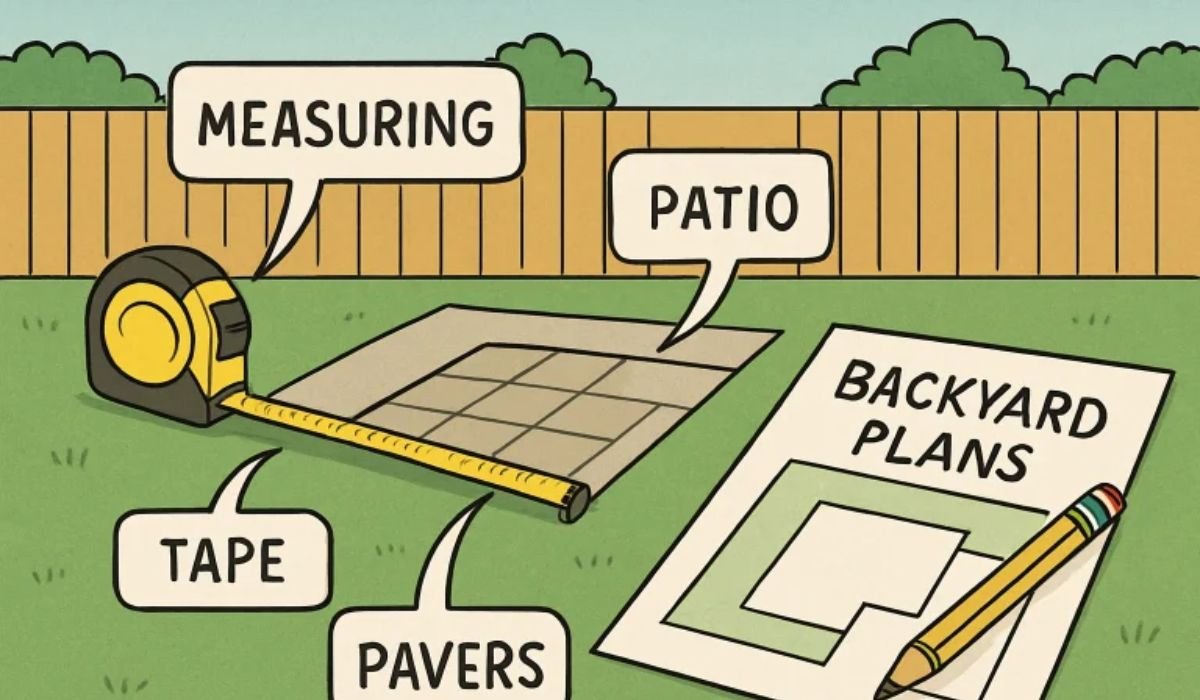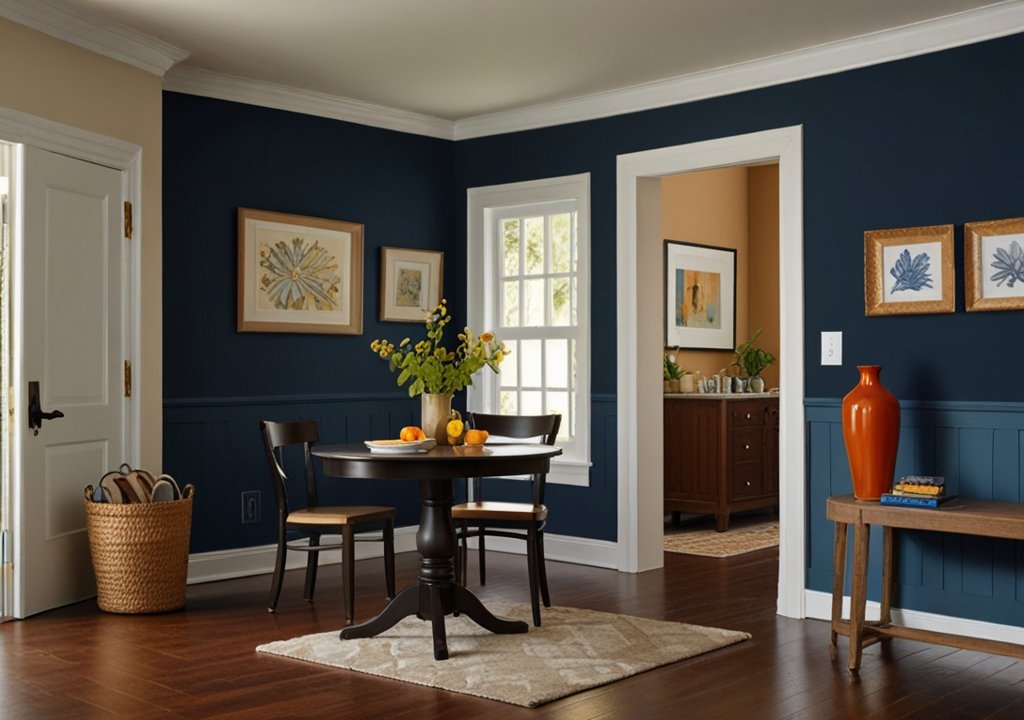Table of Contents
- Assess Room Functionality
- Evaluate Durability and Maintenance
- Consider Aesthetic Appeal
- Factor in Budget
- Prioritize Sustainability
- Understand Installation Requirements
- Test Samples Before Finalizing
- Conclusion
Choosing the right flooring for your home is more than just a design choice—it’s an investment in your comfort, lifestyle, and long-term property value. The type of flooring you select can impact everything from daily upkeep and energy efficiency to the look and feel of your rooms. Whether you’re planning a comprehensive home renovation or simply looking to upgrade a single space, each decision along the way deserves thoughtful consideration and thorough research. For homeowners in Utah, for instance, local expertise can make all the difference—consulting flooring contractors in Ogden and reading reviews not only reveals service quality but also provides insight into the unique demands of the region, such as dealing with seasonal climate changes or local design trends. By taking an informed and proactive approach, you’ll ensure your new flooring not only looks fantastic but also delivers practical benefits that stand the test of time.
With countless flooring materials, finishes, and styles to choose from, the process can feel daunting. However, breaking it down into practical steps—considering your household’s needs, your tastes, and your project’s goals—makes the path much clearer. When you align function with style and durability with your budget, you end up with flooring that truly enhances your everyday living experience.
Assess Room Functionality
Evaluate Durability and Maintenance
No two rooms serve the same role in a home, so selecting suitable flooring begins with understanding each space’s specific demands. Entryways and hallways endure frequent traffic, dirt, and moisture, requiring robust surfaces such as ceramic tile, engineered hardwood, or luxury vinyl. Living rooms, which strike a balance between style and utility, are well-suited to classic hardwood, luxury vinyl plank (LVP), or even upscale carpets for added warmth. Bedrooms, on the other hand, are personal retreats—here, soft, plush carpeting or seamless cork can create a cozy and restful environment. Wet areas, such as kitchens, bathrooms, and laundry rooms, require flooring that is moisture-resistant, including porcelain tile, waterproof vinyl, or natural stone. It’s also important to factor in who will use the space—if kids, pets, or older adults frequent the area, durability and comfort become even more significant. For a more detailed comparison of flooring types and their strengths and weaknesses in various settings, resources like this guide from U.S. News can offer valuable insights. Taking time to map your home’s “traffic patterns” and unique needs sets a strong foundation for selecting the most appropriate flooring material.
Long-term satisfaction with your flooring largely depends on its resilience and ease of maintenance. For busy homes, high-traffic rooms, or spaces prone to spills, opt for materials known for their toughness and stain resistance. Porcelain tile stands out as a nearly indestructible choice, resisting scratches, dents, and moisture, while luxury vinyl plank (LVP) blends realism with low upkeep. Hardwood, while enduring and attractive, demands routine maintenance—periodic refinishing, vigilant cleaning, and protection against moisture and heavy impacts. Laminate offers durability at a more affordable price point, although it may be less resistant to water exposure. Consider your lifestyle—do you crave a “set it and forget it” floor, or are you comfortable with regular upkeep for the sake of luxury or aesthetics? Your answer can significantly narrow your options and help you focus on choices that fit both your schedule and your household’s needs.
Consider Aesthetic Appeal
Flooring doesn’t just serve a functional purpose—it’s a central element in your home’s interior design. The material, color, and pattern you choose will directly influence your room’s ambiance, visual flow, and even how large or intimate a space feels. Seek out textures, sheens, and hues that work with your overarching style, whether it’s modern minimalism, rustic charm, or classic elegance. For example, distressed wood or hand-scraped finishes add a sense of warmth and tradition, while polished concrete or high-gloss tile creates a sleek, contemporary vibe. Don’t forget the role of lighting—natural and artificial light can dramatically alter the tone of wood, tile, or laminate. Always request full-sized or multiple samples to see how they perform under various conditions in your home before making a commitment. Keep in mind that timeless choices, even if slightly understated, tend to have broader appeal and can support resale value when the time comes to sell.
Factor in Budget
Budget constraints shape almost every flooring project, so it’s crucial to plan carefully and weigh upfront costs against long-term value. Natural materials, such as solid hardwood, natural stone, and high-end porcelain tile, often command higher prices, not only for the materials themselves but also for professional installation. However, these investments can extend the life of your flooring and enhance your property’s value for years to come. If you’re working within tighter limits, consider engineered hardwood, laminate, sheet vinyl, or durable LVP—these options mimic the look of premium materials and often offer impressive performance and visual appeal at a lower overall cost. Don’t overlook the often-hidden costs: subfloor preparation, underlayment, adhesives, trims, and labor can add up. Consider allocating 10-20% of your budget as a contingency for unexpected issues. Carefully calculating your total cost ensures there are no unwelcome surprises and helps maximize your return on investment.
Cost vs. Value
It might be tempting to opt for the cheapest available material, but a slightly higher initial outlay for better-quality flooring can pay real dividends over time. High-quality floors resist wear, retain their appearance, and require fewer repairs, meaning lower lifecycle costs. Quality floors also contribute to greater home comfort, improved acoustics, and a more attractive space for years to come. For balanced guidance, it’s beneficial to consult flooring professionals or trusted sources who can help you compare the full spectrum of choices, balancing purchase price, installation cost, durability, and aesthetic value
Prioritize Sustainability
Sustainable flooring options have experienced a sharp rise in popularity as homeowners seek ways to minimize their environmental impact without compromising aesthetics or functionality. Rapidly renewable resources like bamboo and cork regrow quickly after harvest, making them eco-friendly alternatives that are both stylish and comfortable underfoot. Reclaimed wood, sourced from old barns or industrial buildings, offers rich character and helps decrease demand for new lumber. For those sensitive to chemicals, low-VOC (volatile organic compound) floors—such as many linoleum, cork, and natural-fiber carpet products—contribute to healthier indoor air quality. Environmentally responsible manufacturing, certified by standards such as Green America’s eco-friendly certification, ensures that your choices benefit both your home and the planet. Always ask about sourcing, recyclability, and environmental certifications when considering a new flooring option.
Health and Eco-Friendly Benefits
Sustainable materials offer more than just green credentials—they often feel warmer and quieter underfoot, reduce noise transmission, and can improve thermal insulation. Cork and linoleum, for example, are naturally antimicrobial, hypoallergenic, and comfortable for bare feet. When you choose eco-certified products, you’re not only supporting global sustainability but also protecting your family’s well-being against irritants and pollutants sometimes found in less-regulated flooring.
Understand Installation Requirements
The road to beautiful, long-lasting flooring includes thoughtful installation. Some materials, like floating laminate planks or peel-and-stick vinyl, are ideal for motivated DIYers due to their simple, tool-friendly construction. In contrast, solid hardwood, natural stone, or intricate tile jobs often require expert installation to ensure the result is both attractive and structurally sound. Improper installation can lead to gaps, warping, or even costly failures down the road, so do an honest assessment of your capabilities before deciding to go the DIY route. You should also consider the condition of your existing subfloor, the possibility of needing moisture barriers, and the potential disruption to your daily life if your project spans multiple days or weeks. Whenever in doubt, it’s advantageous to call in experienced professionals with local expertise who understand building codes, climate concerns, and trends specific to your region.
Test Samples Before Finalizing
Don’t make the final decision based solely on how the flooring looks in a showroom or on a website. Ordering physical samples allows you to evaluate potential choices in the actual environment where they’ll be installed. Spend a few days with samples of your top contenders, checking them at different times of day to see how changing light affects color and texture. Walk on them with bare feet and shoes, listen for noise differences, and consider temperature variations—tile can be colder than carpet or wood, for instance. Also, observe how well samples coordinate with existing paint, cabinets, countertops, and furnishings. If a floor works well for the whole household, it’s sure to deliver satisfaction long after installation day. Involving all family members in the sampling process encourages consensus and confident decision-making.
Conclusion
Selecting the right flooring is about more than just style—it’s about creating a space that supports your lifestyle, reflects your taste, and holds up beautifully over time. From assessing room functionality and durability to weighing budget considerations and eco-conscious choices, every step in the process contributes to a smarter, more satisfying investment. Whether you tackle the project yourself or work with professionals, taking the time to research, plan, and test your options ensures you’ll enjoy both the look and performance of your floors for years to come. With the proper foundation underfoot, your home becomes not only more functional but also a true reflection of your values and vision.
READ ALSO: Practical Remodeling Ideas To Inspire Your Next Home Project











